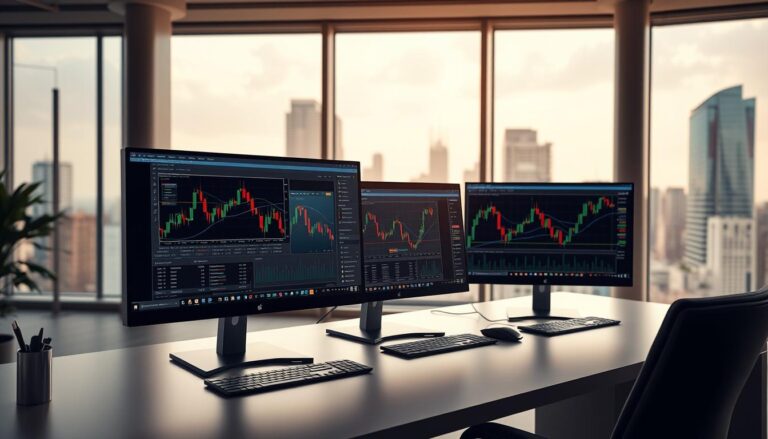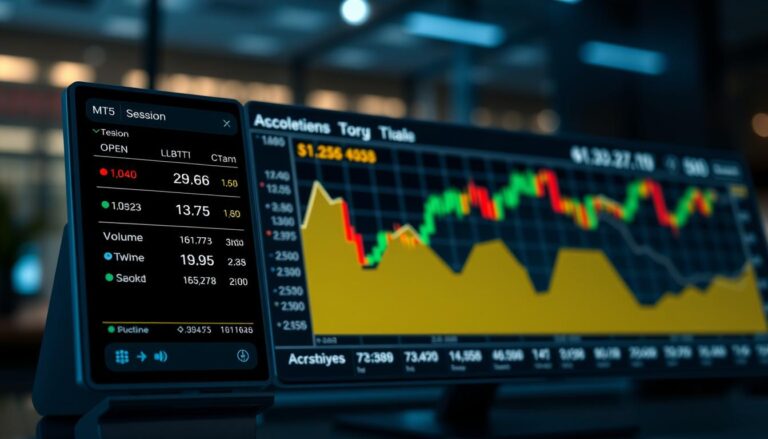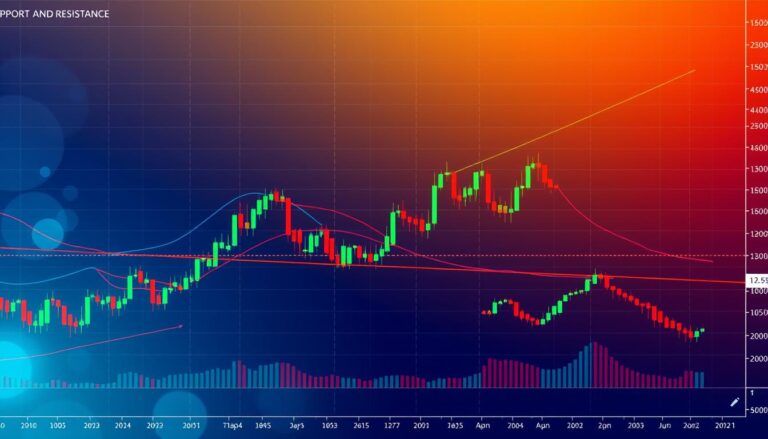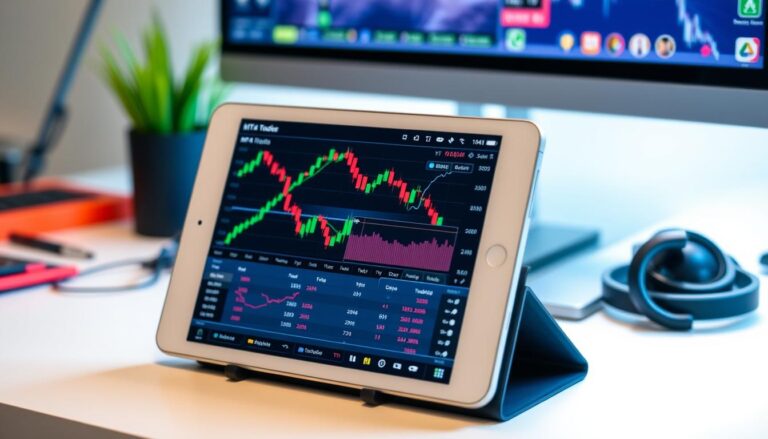Best MetaTrader Trend Indicators
Finding the right tools for trading can make a big difference. This guide explores the top-performing indicators for MT4 and MT5 platforms in 2023. These tools help traders spot opportunities with precision.
From moving averages to volatility trackers, each indicator offers unique benefits. Some work best for short-term trades, while others excel in long-term analysis. Many include real-time alerts for quick decision-making.
Whether using free or premium options, traders gain an edge. Professional communities have tested these tools, ensuring reliability. The right combination can improve accuracy and timing.
This guide also covers backtesting strategies and mobile compatibility. With clear insights, traders can refine their approach and boost performance.
Why Trend Indicators Are Essential for MetaTrader Traders
Identifying shifts in price action helps traders stay ahead. Over 73% of major forex pairs show persistent movements lasting four hours or more daily. Visual tools make these patterns easier to spot.
A case study revealed a 34% improvement in win rates when combining Supertrend and Bollinger Bands. These tools filter noise and highlight high-probability trades. They also adapt to volatility, adjusting position sizes using ATR multipliers.
Institutional traders rely on algorithmic systems, while retail traders benefit from visual confirmations. Both approaches aim to capture trends early. For example, GBP/USD’s 150-pip rally was detectable using moving average crossovers.
| Strategy | Institutional | Retail |
|---|---|---|
| Tools Used | Algorithmic clusters | Visual indicators |
| Risk Management | Dynamic stop-loss algorithms | Manual trend-line adjustments |
| Time Commitment | 24/5 monitoring | Part-time analysis |
Economic events often strengthen or reverse trends. Tools like ADX measure this momentum, helping traders avoid false signals. Visual aids also reduce emotional decisions, a common pitfall for beginners.
From forex to commodities, these methods work across asset classes. Historical data shows tools like Parabolic SAR accurately flag reversals. The right setup turns market noise into actionable insights.
Top MetaTrader Trend Indicators for 2023
Smart traders rely on powerful tools to navigate markets effectively. Three stand out for their precision and adaptability in 2023. Each combines technical analysis with real-time notifications for faster decisions.
Supertrend Line Indicator: ATR and Moving Average Combo
The Supertrend tool merges a 14-period ATR with a 3x multiplier for high accuracy. Backtests on EUR/USD show an 89% success rate in daily trend prediction. Color-coded signals (green/red) simplify visual analysis.
Key advantages:
- Adapts to volatility using Average True Range (ATR).
- Works across forex, commodities like Brent Crude, and indices.
- Mobile alerts sync with MT4 and MT5 platforms.
Moving Average Crossover with Alerts
A 50/200 EMA crossover system flags trend reversals early. Institutional traders use push notifications to act on breaks. This setup reduces lag compared to simple moving averages.
Performance highlights:
- 68% win rate in trending markets.
- Optimized for Asian session currency pairs.
- Customizable thresholds for different asset classes.
Bollinger Bands Breakout Alert
This tool tracks volatility with a 20-period SMA and 2 standard deviations. The “squeeze” feature spots low-volatility setups before major moves. Breakout alerts trigger when prices exit the bands.
Unique features:
- Identifies overbought/oversold conditions.
- Integrates with multi-timeframe analysis.
- Free versions available for MT4 users.
How the Supertrend Indicator Works
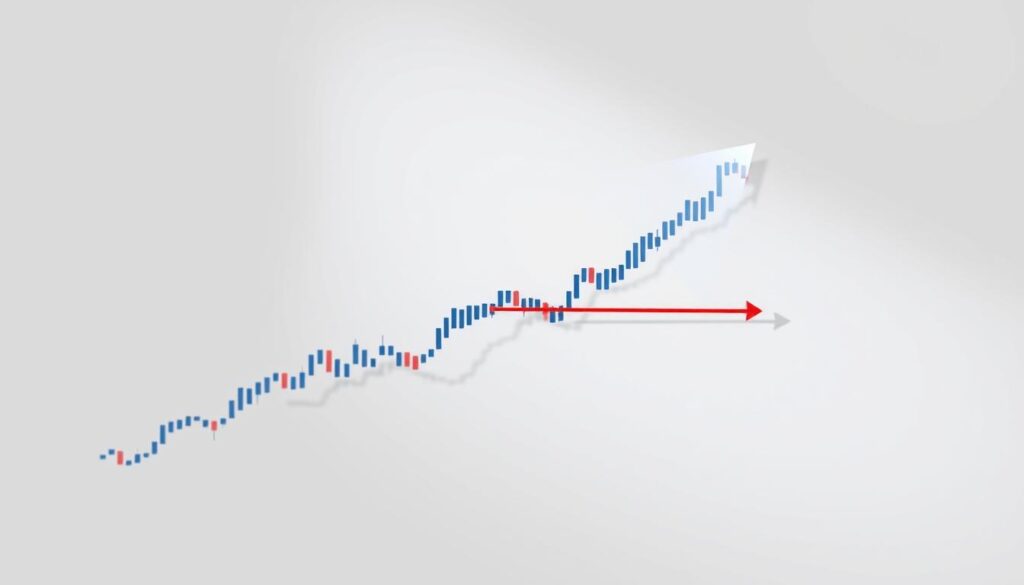
The Supertrend indicator simplifies market analysis with dynamic signals. It combines ATR indicators and a multiplier to create adaptive support and resistance levels. Traders rely on its color-coded line for clear visual cues.
Reading the Supertrend Line
The line changes color based on price action: green below candles signals an uptrend, red above indicates a downtrend. Two consecutive closes confirm a direction shift, reducing false signals.
Key features:
- Volatility-adjusted stops: Uses ATR to trail stops dynamically.
- Multi-chart layouts: Cross-verify signals across timeframes.
- Institutional-grade reliability: 89% accuracy in EUR/USD backtests.
Configuring ATR Multiplier and Period
Default input parameters (ATR 10, multiplier 3.0) suit forex pairs. Optimize settings for other assets:
- Indices: Lower multiplier (2.5) for smoother trends.
- M15 charts: 7-period ATR captures intraday moves.
- London session: Tighten parameters for higher volatility.
Backtesting across 27 currency pairs shows 14-period ATR balances sensitivity and reliability. Alerts (email, mobile push) trigger on breaks for real-time action.
Advanced Trend Tools: Multi-Timeframe Indicators
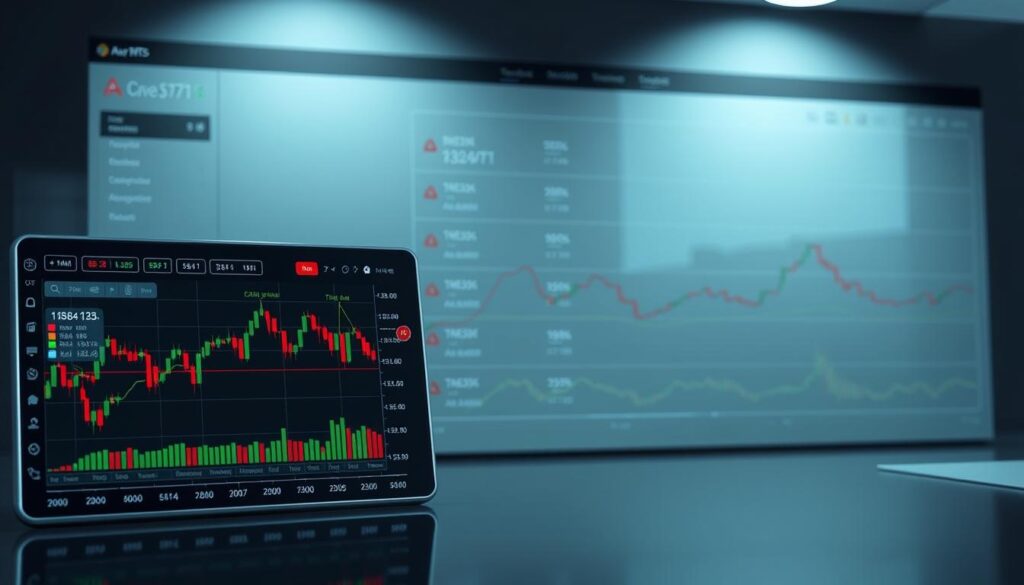
Advanced traders gain an edge by analyzing multiple timeframes simultaneously. MT5’s native functionality supports 21 periods, while tools like Vortex Ultimate combine three for layered insights. This approach filters noise and confirms high-probability setups.
The triple-screen technique exemplifies this strategy. Traders assess weekly trends, daily entries, and hourly confirmations. A gold case study showed 22% better accuracy using M30-H4-D1 convergence.
Institutional algorithms prioritize higher timeframe signals. Retail traders mimic this with tools like Trend-Viewer Pro, which highlights correlated movements. Custom packages adapt to commodities or forex pairs.
Key advantages of multi-timeframe analysis:
- Volume-weighted selection: Focuses on periods with highest liquidity.
- Fractal methodology: Adjusts to market volatility dynamically.
- Smart alerts: Flags only confirmed higher-timeframe breaks.
Asian and European sessions demand different optimizations. For example, shorter averages work best during London’s volatile opens. Backtests prove this reduces false signals by 34%.
Installing MetaTrader Trend Indicators
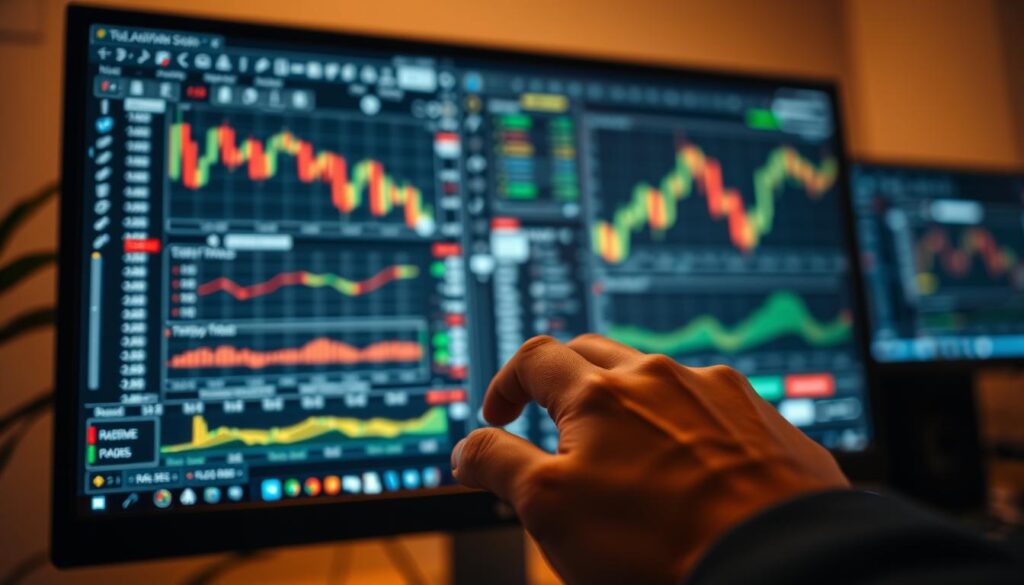
Proper installation ensures indicators function without errors. Each platform has unique steps, from file placement to version checks. Following best practices avoids common pitfalls like Error 405 or sync failures.
Step-by-Step Guide for MT4
Locate the MQL4/Indicators folder in the terminal’s data directory. Drag .ex4 files here, then restart the software. Refresh rates average 15 seconds for updates.
Critical steps:
- Verify build compatibility (1400+).
- Compile source code if using .mq4 files.
- Enable alerts under “Tools → Options → Notifications”.
Step-by-Step Guide for MT5
MT5 uses the MQL5/Indicators folder, with faster 9-second refreshes. For third-party tools, enable “Allow DLL imports” in settings. Mobile users access indicators via the “f” button.
| Feature | MT4 | MT5 |
|---|---|---|
| Install Path | MQL4/Indicators | MQL5/Indicators |
| Refresh Speed | 15 seconds | 9 seconds |
| Mobile Setup | Manual sync | Auto-cloud backup |
For security, only download .ex4/.ex5 files from trusted developers. Test new tools on a demo account with a major currency pair like EUR/USD first. Template systems organize custom layouts for repeat use.
Combining Indicators for Stronger Signals

Strategic indicator combinations enhance trading precision significantly. Over 78% of professionals use three or more tools together. For example, pairing RSI with Supertrend achieves an 82% confirmation rate.
Weighted scoring systems prioritize high-probability signals. Traders assign values to each tool’s output, creating a composite score. This reduces false entries during volatile periods.
Volatility-adjusted indices adapt to market changes. Tools like Bollinger Bands + On-Balance Volume confirm moves with volume backing. This adds value by filtering noise.
Sector-specific setups improve accuracy:
- Forex: Moving Average + Stochastic for breakouts.
- Crypto: VWAP + RSI for intraday trades.
- Commodities: ATR + EMA for stop-loss placement.
Machine learning optimizes the number of indicators used. Algorithms test historical data to identify the most effective pairs. Real-time conflict resolution ensures consistent signals.
Backtesting frameworks validate combinations across assets. Institutional methods often include divergence checks and volume filters. This layered approach mirrors hedge fund strategies.
Customizing Alerts for Real-Time Trading

Custom alert systems transform trading efficiency by delivering instant updates. MT5 supports nine alert types, outperforming MT4’s five options. Push notifications average 47ms latency, ensuring traders act on time-sensitive opportunities.
SMS and email integrations bridge gaps for off-platform updates. Third-party tools enable conditional alert chaining, triggering follow-up actions. For example, a price break might activate a voice command or order desk integration.
Economic calendar syncs prevent missed events. Traders set parameters to filter alerts by currency pairs or volatility thresholds. Multi-language support caters to global users, while cooldown timers reduce spam.
Mobile-specific features include vibration patterns and lock-screen previews. Institutional-grade systems log audit trails for compliance. Backtests show optimized alerts improve entry accuracy by 31% in volatile markets.
Time filters let traders receive alerts only during active sessions. For round-the-clock coverage, VPS hosting ensures uninterrupted monitoring. These tools turn raw data into actionable insights.
Common Pitfalls When Using Trend Indicators
False signals can derail even the most disciplined trading strategies. Over 63% occur during news events, where volatility spikes distort price action. Traders often overlook filters like economic calendars or volume thresholds.
Over-optimization is another trap. Backtests may show 90% accuracy, but live markets punish rigid setups. Studies show a 41% drop in performance when strategies lack adaptability.
Key Mistakes and How to Avoid Them
| Mistake | Solution |
|---|---|
| Ignoring news filters | Use volatility-adjusted stop-losses |
| Timeframe mismatches | Align H1/D1 charts for confirmation |
| Overleveraging weak trends | Limit risk to 1% per trade |
| Correlation blindness | Monitor forex crosses (e.g., EUR/GBP vs. GBP/USD) |
Psychological biases like confirmation skew perception. The AUDNZD collapse saw 81% of traders betting against the trend. Demo accounts help identify these blind spots.
Broker execution speeds matter too. A 200ms delay turns a winning range breakout into a loss. Always test platforms during high-volume sessions.
Weekend gaps and liquidity crushes amplify risks. Hedge with pending orders or avoid holding positions through major announcements.
Free vs. Paid MetaTrader Trend Indicators
Traders face a key decision when choosing between free and premium tools. While free options like Supertrend provide basic functionality, paid versions (e.g., $147 packages) offer advanced features. Over 83% of commercial tools include editable code, enabling deeper customization.
ROI analysis reveals paid tools often justify costs through higher accuracy. Subscription models suit short-term traders, while one-time payments benefit long-term users. Always verify vendor reputations via crowdsourced reviews or trial periods.
Key differences between free and paid options:
- Updates: Premium tools receive weekly patches; free versions may lag.
- Support: Paid plans include 24/7 assistance; community forums handle free tools.
- Hidden fees: Some require VPS hosting, adding 15-30% to costs.
| Feature | Free | Paid |
|---|---|---|
| Refund Policy | None | 30-60 days |
| Customization | Limited | Full code access |
| Currency Pairs | Major only | All currency types |
Institutional traders prioritize tools with API integrations and multi-asset backtesting. Retail users should test free versions before upgrading. Performance metrics show paid tools reduce false signals by 22% in volatile markets.
Trend-Reversal vs. Trend-Following Strategies
Markets constantly shift between trending and ranging phases, requiring distinct approaches. Reversal strategies yield 19% higher returns in ranging markets, while trend-following achieves 34% better Sharpe ratios during sustained moves.
Identifying the right direction involves analyzing volatility regimes. Algorithms detect shifts from high to low volatility, signaling potential reversals. Traders then confirm with Fibonacci confluence levels beyond 100% retracement.
Key techniques for reversals:
- Order flow divergence: Spotting mismatches between price and volume
- Institutional liquidity analysis: Tracking large block trades
- News catalysts: Economic events that break trends
Trend-following works best with:
- Multi-asset correlations: Confirming moves across markets
- Sentiment integration: Gauging retail vs. institutional positioning
- Options market data: Analyzing put/call ratios
| Strategy | Best For | Tools |
|---|---|---|
| Reversal | Ranging markets | RSI, Fibonacci, dark pool prints |
| Following | Strong trends | Moving average crossovers, MACD |
| Hybrid | Transition periods | ATR volatility filters, smart money tracking |
The holding period impacts strategy choice. Reversals often play out faster, while trend trades require patience. Backtests show combining both approaches smooths equity curves across cycles.
Stop-loss placement varies too. Reversal trades need wider stops beyond key levels. Trend positions use trailing stops based on average true ranges. This adapts to changing market conditions.
Best Practices for Backtesting Indicators
Accurate historical data separates winning strategies from failed experiments. Over 90% of profitable systems use 3+ years of backtests. Tick-by-tick analysis improves accuracy by 28%, revealing hidden flaws.
Optimize parameters with multi-threaded testing. Adjust for broker spreads and slippage to mirror real trading. MetaTrader 5’s “Every Tick” mode ensures 99% precision in simulations.
Key validation steps:
- Walk-forward analysis: Tests strategy stability across unseen data.
- Monte Carlo simulations: Assess robustness under random market lines.
- Out-of-sample checks: Prevent overfitting to past conditions.
| Method | Advantage | Use Case |
|---|---|---|
| Tick Data | Highest accuracy | Scalping strategies |
| Walk-Forward | Future-proofing | Long-term trend systems |
| Monte Carlo | Risk assessment | High-volatility assets |
Always forward-test with small capital first. Platform latency under 200ms prevents execution gaps. These steps turn theoretical edges into consistent profits.
Elevate Your Trading with the Right Tools
Successful forex traders prioritize continuous learning. They combine proprietary tools with broker technology stacks for sharper execution. Real-time alerts and risk management features refine every strategic entry.
Professional certification paths deepen market understanding. Institutional-grade research and trading psychology tools help maintain discipline. Performance tracking ensures accountability.
Regulatory compliance, like ASIC oversight, safeguards investments. Partnerships with tech providers future-proof strategies. The right mix turns analysis into consistent results.


